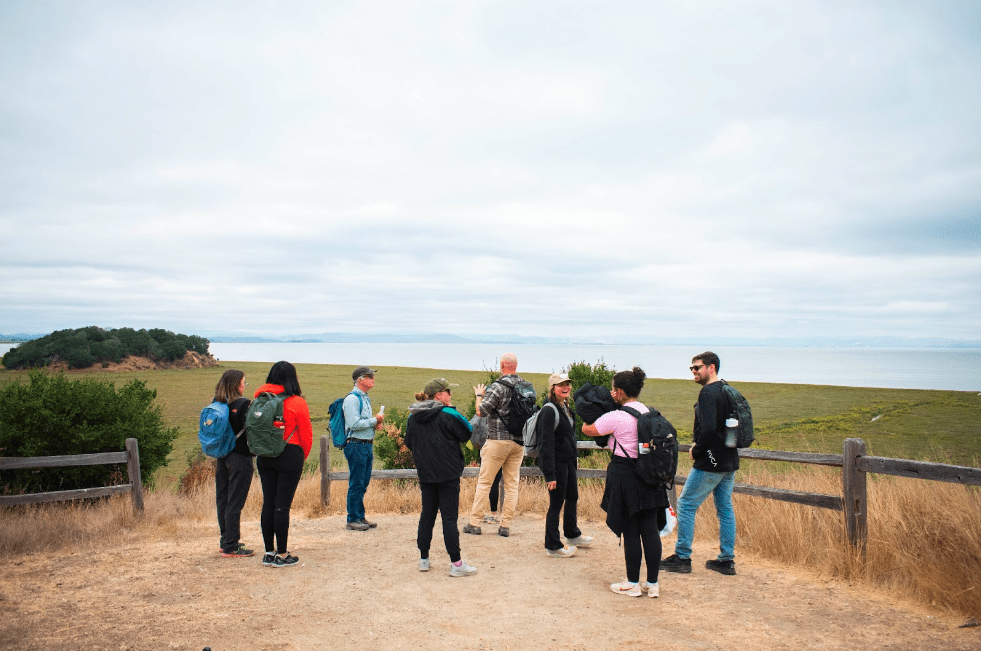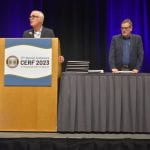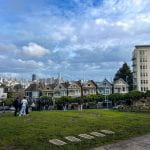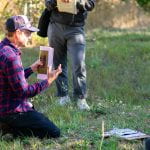In last week’s blog, we highlighted the MSEM Restoration Ecology field trip, where MSEM students learn about the successes and challenges of restoring tidal salt marshes in the Bay Area, such as Muzzi Marsh. This week, we share more about the Restoration Ecology field trip, focusing on model ecosystems and touching on one of the larger restoration projects of the Bay Area.
China Camp State Park: Modeling Undisturbed Ecosystems
The second stop of the field trip brought students to China Camp State Park, nestled in San Rafael. Established in 1978, this state park is a crucial part of the San Francisco Bay National Estuarine Research Reserve. The visit was an opportunity to explore undisturbed ecosystems and understand their critical role as reference sites for ecological restoration projects throughout the region.

Students were introduced to three undisturbed habitat types within China Camp: tidal wetlands, oak woodlands, and riparian forests. In the oak woodlands, the Coastal Live Oak trees (Quercus agrifolia) towered above a mix of native and non-native grasses and shrubs. The riparian forests showcased a diverse range of tree species, including willows (Salix spp.), California Bay Laurel (Umbellularia californica), California Buckeye (Aesculus californica), Madrone (Arbutus menziesii), and various shrubs and plants.

China Camp’s tidal salt marshes, some of the largest and most intact in the San Francisco Bay, provided a breathtaking view. These marshes are home to a variety of salt marsh species, dissected by large tidal channels. Cordgrass (Spartina foliosa) thrives at the lowest elevations, while pickleweed (Salicornia pacifica) carpets the flat marsh plain. The channels are easily distinguishable, with taller shrubs, primarily gum plant (Grindelia stricta), marking their borders. The unique feature of this marsh is its relatively “natural” state, complete with a transition to upland habitats and expansive tidal mudflats leading to the deeper portions of southern San Pablo Bay.

Hamilton Field: A restoration Initiative on a Grand Scale
The final stop of the trip took the MSEM students to the Hamilton Field restoration site in Novato. This site represents one of the larger-scale restoration projects, supported by the State Coastal Conservancy, the US Army Corps of Engineers, and the San Francisco Bay Conservation and Development Commission. Covering 760 acres, it includes over 400 acres of tidal marsh restoration and 200 acres of seasonal wetlands. There is also a larger parcel just north of here earmarked for future restoration.
Hamilton Field’s history is intertwined with farming, as the site was diked off from the Bay in the early 1900s for agricultural purposes. In 1935, an airfield was constructed on the site, remaining operational until 1974 when it was eventually closed in 1988. To encourage the development of tidal wetlands, the site was elevated to a level close to natural wetlands through the placement of dredge material, primarily from the Port of Oakland. The site was reconnected to the San Francisco Bay in 2014, marking a significant milestone in the restoration project. Countless hours have been dedicated to planting vegetation around the margin of the project, and continuous evaluation has been carried out to monitor the project’s evolution over time.
For more in-depth information about the Hamilton Field restoration project, visit this link.

The restoration ecology field trip offered MSEM students a firsthand look at the challenges and successes in the world of ecological restoration. Understanding how restoration takes place in real time is extremely useful when nurturing a new generation of environmental stewards as we all continue preserving and restoring the beauty and diversity of our natural resources.

Special thanks to Professor John Callaway for providing the historical and natural history of the aforementioned sites.





